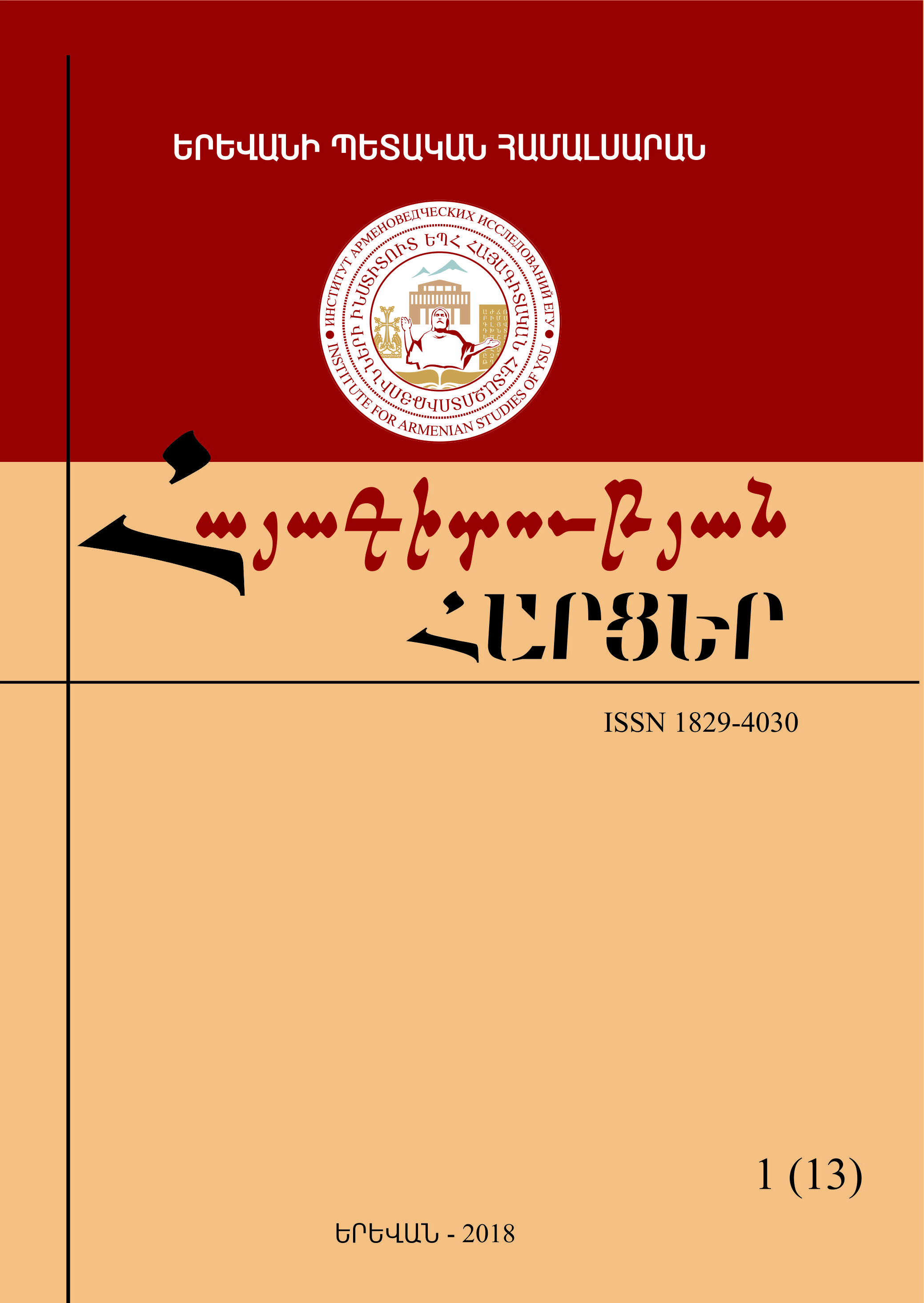Ժամանակի քերականական կարգը գրական արևելահայերենում
Abstract
In our opinion the conjugation system of literarily eastern Armenian, more precisely, the paradigm of the indicative, requires some specification. Particularly, it refers to the constructions with -ել-ու, -ալ-ու, -ել, -աց-ել, -ած, -աց-ած and կ(ը). Analyzing the constructions with -ել-ու, -ալ-ու according to their historical development and the principles of the semantics of grammar, we come to a conclusion that those are forms of the genitive case of the Infinitive, and in combination with եմ, էի have the grammatical meaning of coercion, necessity, which is not typical to the indicative, consequently cannot be included in this paradigm. Actually, only the verbal forms with կ(ը) have the meaning of the future tense of the indicative. Following the above mentioned principles, we examine the forms with -ել, -աց-ել, -ած, - աց-ած and come to a conclusion that the derivative verbal forms of -ել, -աց-ել (from the suffix –եալ) form the perfect of the indicative by means of the form being -եմ. With the help of -էի the Pluscuamperfect is formed, that is, the perfect of antecedence, and the suffix constructions with -ած, -աց-ած historically coming to substitute -եալ, do not pertain to this paradigm, because they don’t have the grammatical meaning of action. The above mentioned analyses are based on the primary principle that the foregoing analytic constructions do not constitute a participle plus an auxiliary verb, but a stem plus verbal endings -եմ, -էի.

